Are you looking for some known and unknown vegetables that start with the letter F? No worries, you have come to the right place. This article is exactly what you need.
F is the sixth letter of the alphabet. Here, in this article, I have comprised an ample list of some common and uncommon vegetables starting with the letter F.
Whether your need is, to write a cookbook, school magazine, research content, or for general cooking, you will find all the information about the F letter Vegetables in this article.
Also, keep in mind that, here I consider all types of vegetables like green leafy vegetables, root vegetables, flowering plants, sea vegetables, etc.
So, without any further ado, let’s get started with the list of vegetables that start with the letter F.
Vegetables That Start With F
The vegetables mentioned below have been compiled from various sources around the web, such as Wikipedia, Quora, Pinterest, etc. Following are the vegetables that begin with the letter F:
1. French Sorrel
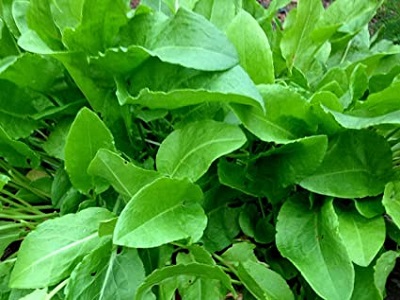
French Sorrel is a vegetable that begins with letter F and is mainly used in salads. It is called Rumex scutatus scientifically and belongs to the family of Polygonaceae. It is also known as shield-leaf sorrel, buckler sorrel, and green sauce.
It is packed with various nutrients that are very helpful for the human body such as carbohydrates, proteins, necessary fibers, vitamins A, C, B6, folate, minerals potassium, magnesium, manganese, copper, iron, riboflavin, phosphorus, etc.
French Sorrel has many health benefits such as it has antioxidants that fights against free radicals and helps the skin and cells, reduces the risks of cancers, supports the health of the heart, reduces inflammation, boosts the immune system, maintains healthy blood sugar level, etc.
2. Fennel

Fennel is a perennial flowering plant that belongs to the carrot family. It is hardy and has yellow flowers and leaves. In the scientific world, it is known as Foeniculum vulgare. It is native to the Mediterranean shores but naturalized in other parts of the world too.
This F letter vegetable has many minerals and vitamins that make it a healthy vegetable such as carbohydrates, proteins, dietary fibers, low fat, vitamin C, folate, potassium, carotene, calcium, magnesium, etc.
It has a licorice-like flavor and can be sweetened after properly cooked.
Fennel has many health benefits such as helps to maintain a healthy heart, supports healthy skin, reduces inflammation, promotes weight loss, improves the symptoms of anemia, protects the respiratory tracts, etc.
3. Fiddlehead Fern

Fiddlehead Fern is a furled frond of a fern and is cultivated to use it as a vegetable. It is called Matteuccia struthiopteris in botanical language. It is also known as Ostrich fern and fiddlehead greens. It tastes sweet like asparagus.
It has many important nutrients filled with vitamins and minerals such as vitamins A, C, E, riboflavin, thiamine, folate, minerals calcium, potassium, magnesium, manganese, sodium, zinc, copper, phosphorus, etc.
Fiddlehead Fern has many health benefits such as it has a high level of copper that assists in human growth, maintains a healthy cholesterol level, fights against many types of cancers, boosts and enhances immunity, reduces inflammation, Improves eye health and bone health, etc.
4. Feijoa
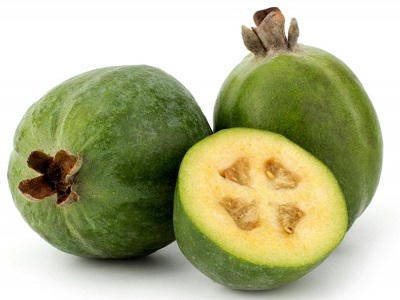
Feijoa is a flowering plant and a small evergreen tree that is native to Brazil, Uruguay, Paraguay, and parts of Argentina. It is known as Acca sellowiana or Feijoa sellowiana and belongs to the family of Myrtaceae. It is cultivated in mild dry weather for its sweet fruits.
This F letter vegetable is packed with various vitamins and minerals such as vitamins A, C, E, K, riboflavin, thiamine, folate, minerals calcium, magnesium, potassium, manganese, copper, zinc, iron, sodium, phosphorus, etc.
Feijoa has many health benefits such as it helps in treating inflammation, the digestive system, prevents bacteria, fights against many types of cancers, prevents constipation, supports heart health, enhances moods, boosts the immune system, maintains healthy blood pressure, etc.
5. Fenugreek

Fenugreek is an annual vegetable starting with letter F. It has leaves with three small obovate to obolong leaflets. It is called Trigonella foenum-graecum and belongs to the family of Fabaceae. It is cultivated vastly around the world as a semiarid plant.
It is enriched with various vitamins and minerals that make it a healthy vegetable such as vitamins C, B6, folate, proteins, carbohydrates, dietary fibers, minerals calcium, potassium, iron, magnesium, manganese, etc.
Fenugreek has many health benefits such as it boosts the production of breastmilk, increases testosterone levels in men, controls blood sugar levels and diabetics, increases appetite, reduces cholesterol, fights against heartburn, reduces inflammation, etc.
6. Fig

Fig is a flowering plant and is cultivated for its edible fruits. It is called Ficus carica scientifically and belongs to the family of Moraceae. It is native to Western Asia and the Mediterranean. It has been cultivated from ancient times, and now it is grown worldwide.
This F letter vegetable is packed with rich vitamins and minerals such as vitamins A, C, folate, proteins, carbs, fibers, minerals calcium, potassium, magnesium, iron, sodium, etc. It can be eaten both raw and cooked, and it tastes sweet like honey.
Fig has many health benefits such as it maintains a healthy blood pressure level, prevents heart diseases and stroke, it improves digestion, prevents constipation and diarrhea, increases bone density and improves bone health, etc.
7. Frisee Greens
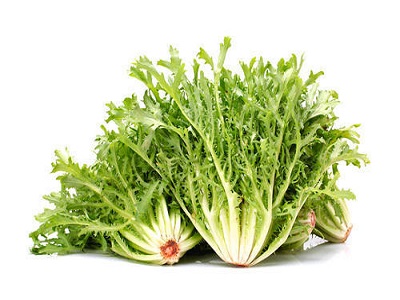
Frisee greens is a hearty green vegetable beginning with letter F. It has narrow stems and curly leaves. It is called Cichorium endivia var. crispum in the botanical world. It is also known as curled endive. It has a bitter taste when it is eaten raw, but the taste gets better when cooked.
It has many important nutrients filled with vitamins and minerals such as vitamins A, C, E, K riboflavin, folate, niacin, thiamine, minerals calcium, magnesium, potassium, manganese, iron, zinc, phosphorus, etc.
Frisee greens has many health benefits such as it fights against the risks of many cancers, promotes healthy heart, reduces cholesterol, improves eye health, promotes weight loss, supports women to have e healthy pregnancy, fights against allergies, etc.
8. Finger Lime

Finger lime is a thorny small tree that is native to rainforests of Queensland and New South Wales in Australia. It is known as Citrus australasica scientifically and belongs to the family of Rutaceae. It is grown for its edible fruits.
This F letter vegetable is packed with numerous vitamins and minerals such as vitamins A, C, proteins, dietary fibers, low fat and cholesterol, minerals sodium, calcium, potassium, iron, etc. It has a citrus lime flavor and can be eaten both raw and cooked.
Finger lime has many health benefits such as it has antioxidants that fights against free radicals, improves eye health and prevents night blindness, protects skin and cells, prevents many types cancers, maintains healthy blood pressure, etc.
9. French Bean

French bean is another annual herbaceous vegetable starting with F. it is usually cultivated for its seeds. It is called Phaseolus vulgaris scientifically and belongs to the Fabaceae family. It is also known as a common bean.
It is rich in many important nutrients like vitamins A, C, K, fiber, folic acid, potassium, magnesium, calcium, potassium, magnesium, etc. It can be eaten toasted, boiled, fried, or cooked, and it tastes grainy and nutty, often sweet.
Because of its enriched nutrients, French bean has many health benefits such as it helps in maintaining and repairing the body, reduces the risk of cancer, prevents diabetics and fatty liver, improves heart health, controls appetite, etc.
10. Flat Cabbage
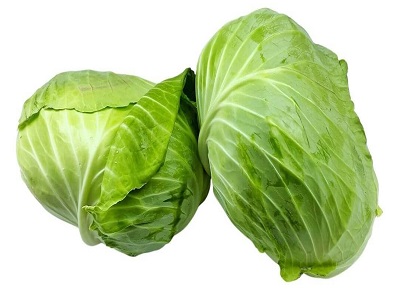
Flat cabbage is a cruciferous vegetable that is similar to lettuce. It is called Brassica rapa var. rosularis scientifically. It’s a biennial plant with a bulbous leafy head. It is similar to regular cabbage but flatter, and its leaves are crunchy and flexible.
It has many nutritional values that make it a very healthy food. This vegetable contains vitamins A, B6, C, and K, folate, and minerals like potassium, iron, sodium, magnesium, and necessary fibers.
Flat Cabbage has many health benefits. It is known that it improves the human immune system, heart health, digestion, and also prevents cancer. It can be eaten in many ways such as raw, in a salad, cooked, stuffed, steamed, boiled, or roasted.
11. Fava Bean
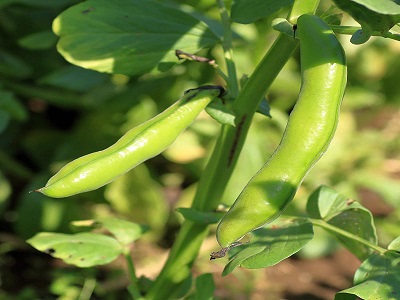
Fava bean is a flowering plant and a member of the pea and bean family. It is called in the scientific world as Vicia faba and belongs to the family of Fabaceae. It is also known as broad bean or faba bean. This vegetable is cultivated widely around the world.
This F letter vegetable has many nutritional values that make it very healthy for humans such as vitamins C, B1, B6, folate, proteins, carbohydrates, necessary fibers, minerals potassium, magnesium, manganese, copper, iron, etc.
Fava Bean has many health benefits such as it helps to prevent Parkinson’s disease, helps in preventing defects during births, boosts the immune system, improves bone health and symptoms of anemia, controls and maintains healthy blood pressure, promotes weight loss, etc.
12. Fluted Pumpkin

Fluted pumpkin is a leafy vegetable that grows on a vine, and is cultivated for its seeds. It is known as Telfairia occidentalis in the scientific world and belongs to the Cucurbitaceae family. It is native to West Africa. It is also called ugu, fluted gourd, ikong-ubong, etc.
It is packed with various nutrients consisting of many vitamins and minerals such as vitamins A, C, K, proteins, carbs, fibers, low fat, minerals calcium, sodium, potassium, iron, etc. It can be eaten both raw and cooked.
Fluted pumpkin has many health benefits such as improves digestion, improves bowel movement, reduces constipation, maintains body tissues, fights against free radicals, balances hormones, maintains a healthy blood sugar level, prevents diabetes, improves bone and teeth health, etc.
13. Field Mushroom
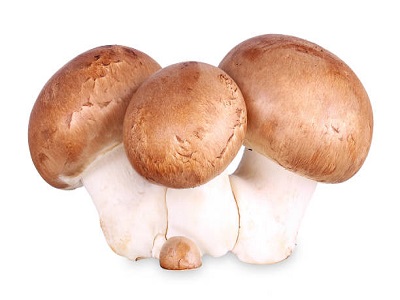
Field mushroom is a small planty vegetable that starts with F and most commonly eaten in Ireland and Britain. It is known as Agaricus campestris in the botanical world and belongs to the family of Agaricaceae. It is a close relative to the button mushroom.
It is enriched with various nutrients such as vitamins C, D, thiamine, selenium, proteins, carbs, fibers, low sugar, low fat, copper, zinc, magnesium, potassium, phosphorus, etc.
Field mushroom has many health benefits such as it fights against free radicals, Alzheimer’s, hearth diseases, improves bone health, boosts the immune system, helps in children’s growth, lowers blood pressure, promotes weight loss, etc.
14. False Daisy
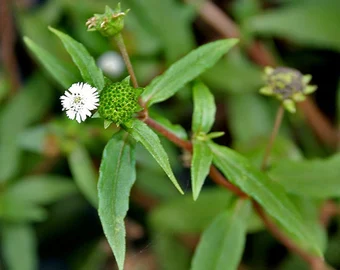
False daisy is a small plant in the sunflower family, and grows widely worldwide. It is called Eclipta prostrata scientifically and belongs to the family of Asteraceae. It is also known as bhringraj, Gunta kalagaraku, Karisalankanni, etc.
It is enriched with various vitamins and minerals that make it a healthy vegetable such as vitamins D, E, antioxidants, and many important chemical properties like antiviral, antileprotic, antihaemorrhagic, minerals calcium, magnesium, etc.
False Daisy has many health benefits such as it improves skin health, gives relief from migraine, controls high blood pressure, prevents jaundice, helps to reduce ulcers, prevents diabetes and cholera, improves eye health, etc.
15. Fat Hen
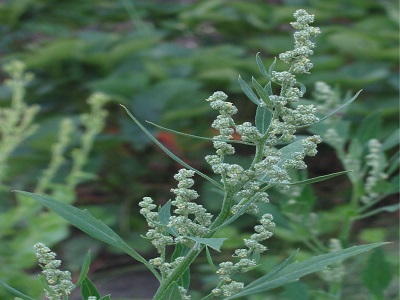
Fat hen is an annual plant that grows very fast and is cultivated in some countries as a vegetable. It is called Chenopodium album scientifically and belongs to the family of Amaranthaceae. It is also known as white goosefoot.
This F letter vegetable has many nutritional values consisting of various vitamins and minerals such as vitamins A, B1, B2, C, niacin, minerals calcium, iron, copper, magnesium, phosphorus, and Omega 3 fatty acids.
Fat hen has many health benefits such as it helps in constipation and acidity, keeps heath healthy, improves teeth health, cures skin diseases, prevents jaundice, helps in anemia, beneficial in kidney stone, etc.
16. Field Blewit

Field blewit is a species of edible fungus that is grown in grassy areas and is native to Europe. It is called Lepista personata scientifically and belongs to the family of Tricholomataceae. It is different from its close relative wood blewit.
It is packed with many vitamins and minerals such as vitamins C, D, folate, selenium, antioxidants, proteins, fibers, low calorie, low fat, minerals sodium, potassium, Beta-glucans, etc. It can be eaten as toast, cooked, or boiled.
Field Blewit has many health benefits such as it fights against free radicals and many types of cancers, reduces tumors and inflammation, promotes healthy cells, regulates and controls high blood pressure, reduces cholesterol, promotes weight loss, etc.
Frequently Asked Questions About Vegetables Beginning With F
Following are some frequently asked questions people asked randomly about Vegetables starting with F:
What Are Some 6 Letter Vegetables That Start With Letter F?
- Fennel
- Feijoa
- Fat Hen
What Are Some 10 Letter Vegetables That Start With Letter F?
- Finger Lime
- French Bean
- False Daisy
What Are Some 11 Letter Vegetables That Start With Letter F?
- Flat Cabbage
- Field Blewit
What Are Some 12 Letter Vegetables That Start With Letter F?
- French Sorrel
- Frisee Greens
What Are Some 13 Letter Vegetables That Start With Letter F?
- Fluted Pumpkin
- Field Mushroom
Conclusion
I hope you found this article time worthy and helpful and at the same time you educated yourself about the vegetables and their characteristics starting with the letter F.
I have tried to collect and include as many vegetables that start with F as possible in this article.
If you found any more missing vegetables starting with F, please let me know in the comment section below. I will update the list as soon as possible.
Also, I recommend you read other articles that I have comprised for you with other letters. Such as:
- Vegetables That Start With D
- Vegetables That Start With F
- Vegetables That Start With G
- Vegetables That Start With H
- Vegetables That Start With I

